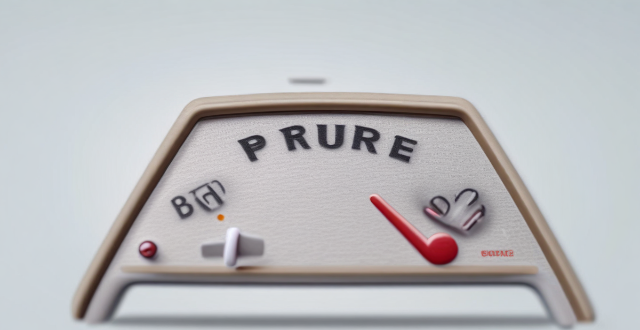Checking your car's tire pressure is crucial for safety and efficiency. Use a tire pressure gauge and consult your owner's manual or tire placard to find the recommended pressure. Remove valve caps, attach the gauge securely, read the current tire pressure, compare it with the recommended pressure, adjust as needed using an air pump, replace valve caps, and repeat regularly to maintain optimal tire pressure.

How to Check Your Car's Tire Pressure
Checking your car's tire pressure is an important step in maintaining the safety and efficiency of your vehicle. Here's a detailed guide on how to do it:
Tools Needed:
- Tire pressure gauge
- Owner's manual or tire placard (usually located on the driver's side door sill)
Steps to Check Tire Pressure:
1. Find the recommended tire pressure: Before checking your tire pressure, you need to know what it should be. This information can be found in your owner's manual or on the tire placard. The recommended pressure is usually measured in pounds per square inch (PSI).
2. Locate the valve stems: The valve stems are located on the tires themselves. They are typically black or silver and have a cap covering them.
3. Remove the valve caps: Take off the caps from all four valve stems. Keep them in a safe place so they don't get lost.
4. Attach the tire pressure gauge: Press the open end of the tire pressure gauge onto the valve stem. Make sure it's securely attached and not leaking air.
5. Read the gauge: Look at the gauge to see what the current tire pressure is. It will give you a reading in PSI.
6. Compare with recommended pressure: Compare the reading on the gauge with the recommended tire pressure for your vehicle. If it's too low, you'll need to add air. If it's too high, you'll need to release some air.
7. Adjust tire pressure as needed: Use an air pump at a gas station or service center to add or release air until you reach the recommended tire pressure for your vehicle. Be sure to check each tire individually and adjust accordingly.
8. Replace valve caps: Once you've adjusted the tire pressure, replace the valve caps onto each valve stem. This helps protect the valve from dirt and debris.
9. Repeat regularly: It's important to check your tire pressure regularly, especially before long trips or when temperatures change significantly. Underinflated tires can cause poor fuel economy, reduced handling, and increased wear and tear on your vehicle. Overinflated tires can lead to decreased traction and increased risk of blowouts.